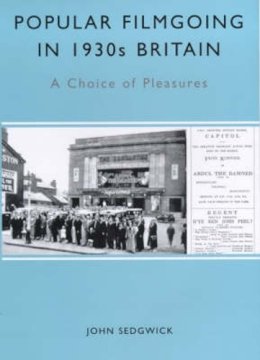
Stock image for illustration purposes only - book cover, edition or condition may vary.
Popular Filmgoing in 1930s Britain
John Sedgwick
€ 136.66
FREE Delivery in Ireland
Description for Popular Filmgoing in 1930s Britain
Hardback. In the 1930s there were close to a billion annual admissions to the cinema in Britain and it was by far the most popular paid-for leisure activity. This book is an exploration of that popularity. The book establishes similarities and differences between national and regional tastes through case study analysis of cinemagoing in Bolton and Brighton. Series: Exeter Studies in Film History. Num Pages: 328 pages, illustrations. BIC Classification: 1DBK; 3JJG; APF; HBJD1; HBLW; HBT; JFC. Category: (P) Professional & Vocational; (UP) Postgraduate, Research & Scholarly; (UU) Undergraduate. Dimension: 234 x 156 x 26. Weight in Grams: 700.
In the 1930s there were close to a billion annual admissions to the cinema in Britain and it was by far the most popular paid-for leisure activity. This book is an exploration of that popularity. John Sedgwick has developed the POPSTAT index, a methodology based on exhibition records which allows identification of the most popular films and the leading stars of the period, and provides a series of tables which will serve as standard points of reference for all scholars and specialists working in the field of 1930s cinema. The book establishes similarities and differences between national and regional ... Read more
Product Details
Format
Hardback
Publication date
2000
Publisher
University of Exeter Press United Kingdom
Number of pages
328
Condition
New
Series
Exeter Studies in Film History
Number of Pages
328
Place of Publication
Exeter, United Kingdom
ISBN
9780859896603
SKU
V9780859896603
Shipping Time
Usually ships in 15 to 20 working days
Ref
99-2
About John Sedgwick
John Sedgwick is Principal Research Fellow at the University of North London.
Reviews for Popular Filmgoing in 1930s Britain
"Sedgwick's attempt to bring about a new kind of synthesis of economic and cultural history, offering in the process a new way of assessing the relative popularity of the films that were available to the enormous cinema-going public in the Britain of the 1930s, is a resounding success. It should be essential reading for business historians, because it starts from ... Read more
